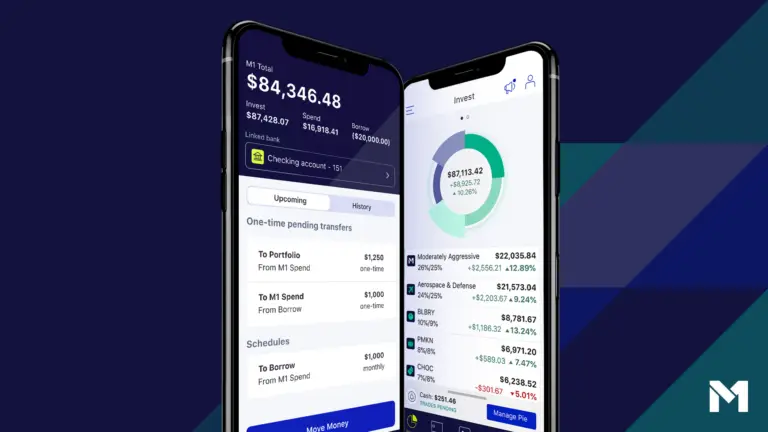What Is An Interest Rate?
Table of Contents
What is an interest rate?
Interest rates are the rates at which you earn money with things like savings accounts, checking accounts, dividends, and etc. They are also the rates at which the amount of money that you owe on things like various types of loans and other debts increases. Most interest rates are what you can earn or get charged at a rate that happens per year.
If you owe money on debt there is the principal, which is the money you initially borrowed, and then there is the interest owed, which is the money that is constantly added to the amount you owe until you pay all of the debt off. So it’s safe to say that you always want to be on the earning side rather than the owing money side.

Here’s an example of how interest can help you when it earns you money. Say you invested $100,000 of your money into something that earns you 5% interest per year.
5% of $100,00 per year is $5,000. So at the end of one year, if you left the money alone, you would have a total of $105,000 without needing to lift a finger in order to earn that extra $5,000
Here’s an example of how money can hurt you if you owe money that charges you interest. Let’s say you borrowed $10,000 with an interest rate of 10% per year.
10% of $10,000 is $1,000. So at the end of one year if you never paid any of that $10,000 principal of you would owe an extra $1,000. That’s why it’s always important to pay off your debts less they eventually balloon to be even bigger than the debt that you originally owned.
What is compound interest?
Compound interest is where both the principal and interest gained over time are taken into account to calculate how much total interest you earn or owe over time. The “principal” is the amount of money that is initially invested or borrowed. When you earn compound interest, depending on the number of times per year that the interest is compounded, or added to the principal.
You will earn more money over time than if you simply added money to whatever you earn or owe with just regular interest. Because compound interest can increase the amount of money you can earn exponentially over time is the reason someone like Albert Einstein is quoted to have said that compound interest is the 8th wonder of the world!
What does APY mean?
APY stands for annual percentage yield. Unlike in the interest-based example, APY includes both your interest rate and the frequency of compounding interest, which is the interest you earn on your principal plus the interest on your earnings.
If you want to figure out how much interest you will earn on a deposit after a year there’s a formula that you can use that goes like this, APY=((1+(r/n))^n-1)*100. APY stands for the annual percentage yield, the (r) stands for the interest rate, the (n) stands for the number of times the interest compounds per year. Normally, in savings and checking accounts, from banks like Ally, Chase, Sofi, and etc., the interest compounds, or is added to the principal, monthly. Interest can also compound both daily, weekly, or annually depending on where you invest your money.
Here’s an example of the APY of one of the examples we talked about earlier. We will be calculating the APY of an investment of $100,000 with a 5% interest rate compounded every day.
APY=((1+(r/n))^n-1
APY=((1+(0.05/365))^365-1)*100
APY=((1+0.0001369863)^365-1)*100
APY=((1.0001369863)^365-1)*100
APY=((1.0512674959)-1)*100
APY=0.0512674959*100
APY=5.13%
Therefore the actual interest earned from both the principal investment and the interest that is constantly added to the principal is roughly 5.13%. That adds up to earning roughly $5,130 in interest after one year if the money is left alone.
What does APR mean?
APR stands for annual percentage rate. While it may be similar to APY it is different because of compound interest while APR does not. Savings and checking accounts typically advertise their APY to customers to let people know their money earns compound interest. While lenders selling loans, credit cards and etc. typically advertise the APR because it makes it sounds like you will owe less money. Technically the interest you have on your debt will still gain compound interest. It’s basically just a misleading tactic lenders use to get people to borrow more money.
Since APR doesn’t take into account compound interest like APY does, the formula to calculate APR is simpler. The formula for APR is APR=r*n where (r) is the interest rate and the (n) is the number of times it compounds.
Here’s an example of APR using the same scenario as the one for APY
APR=r*n
APR=0.05*365=18.25%
Disclaimer: I am not any sort of investment or financial professional giving any sort of legal advice. I’m just some guy trying to teach other people about how they might navigate the financial world.
Want to teach your kids about personal finance? Click on the link here to sign up for a Greenlight Debit Card account to help them learn about banking and investing! https://greenlight-card.pxf.io/9WJ3BW








Heya i amm foor the primary time here. I found this board aand
I tto fijd It realoy hellpful & iit helped mee oout much.
I hop to offer something gain annd hel othesrs like yoou helped me.